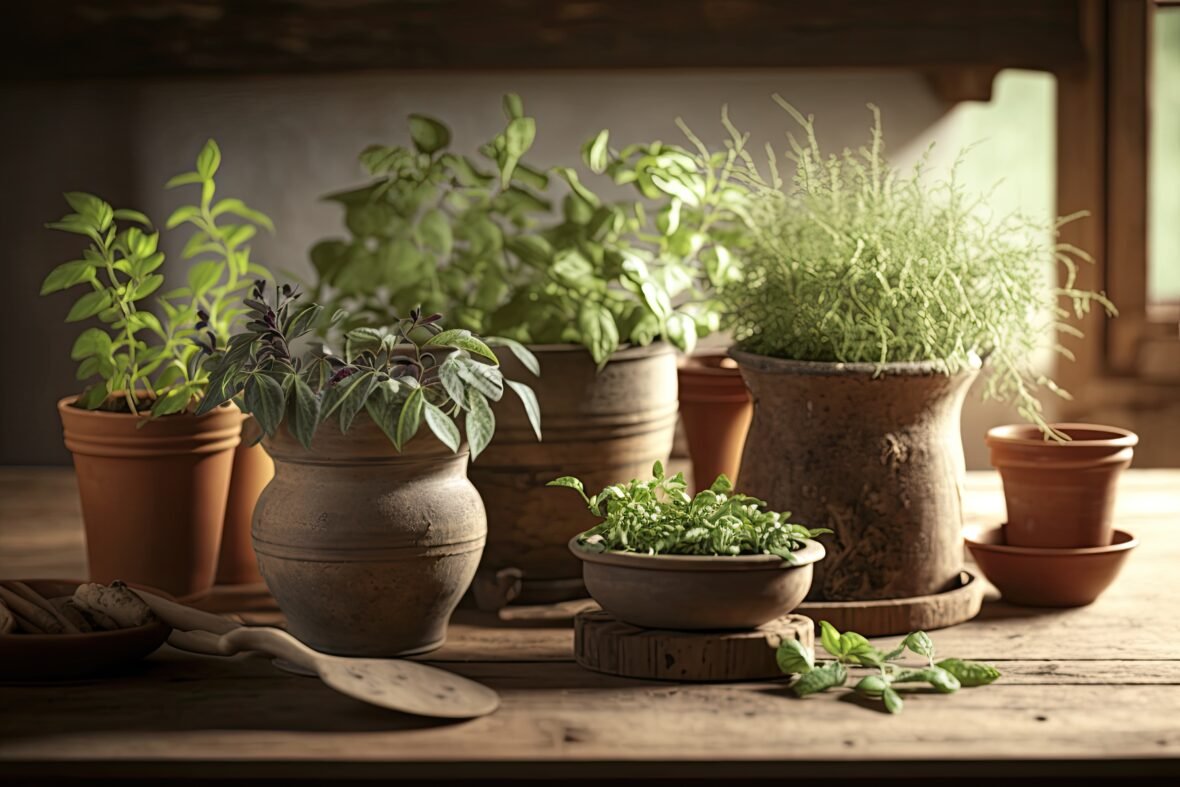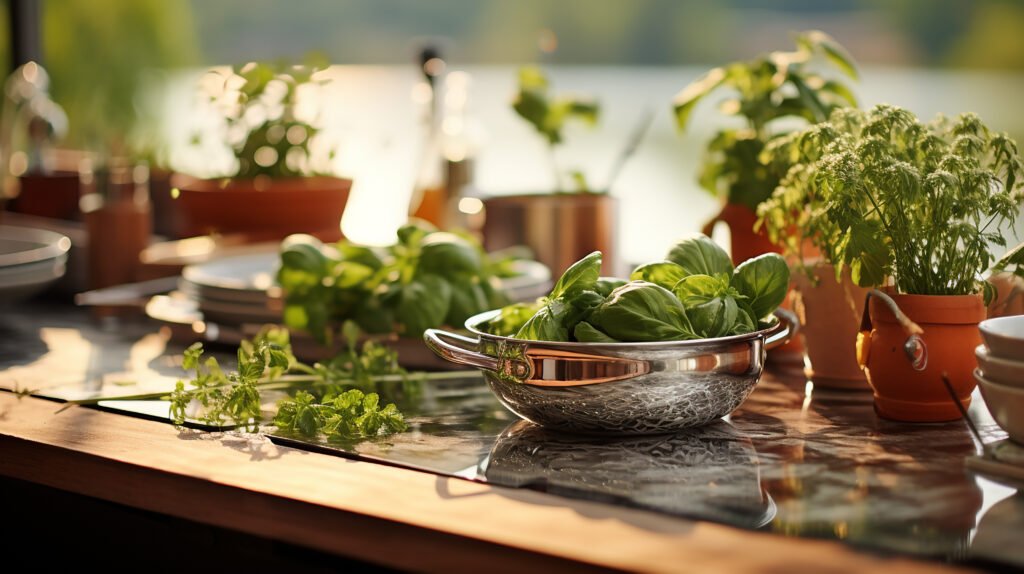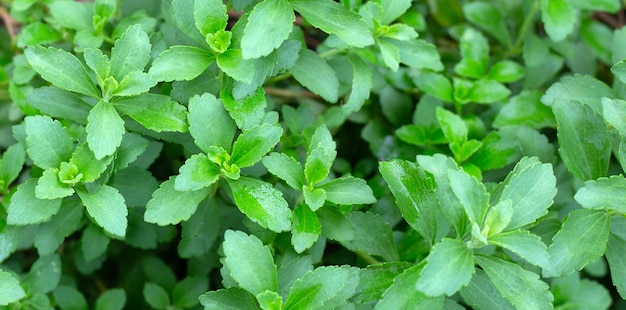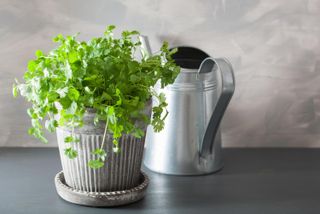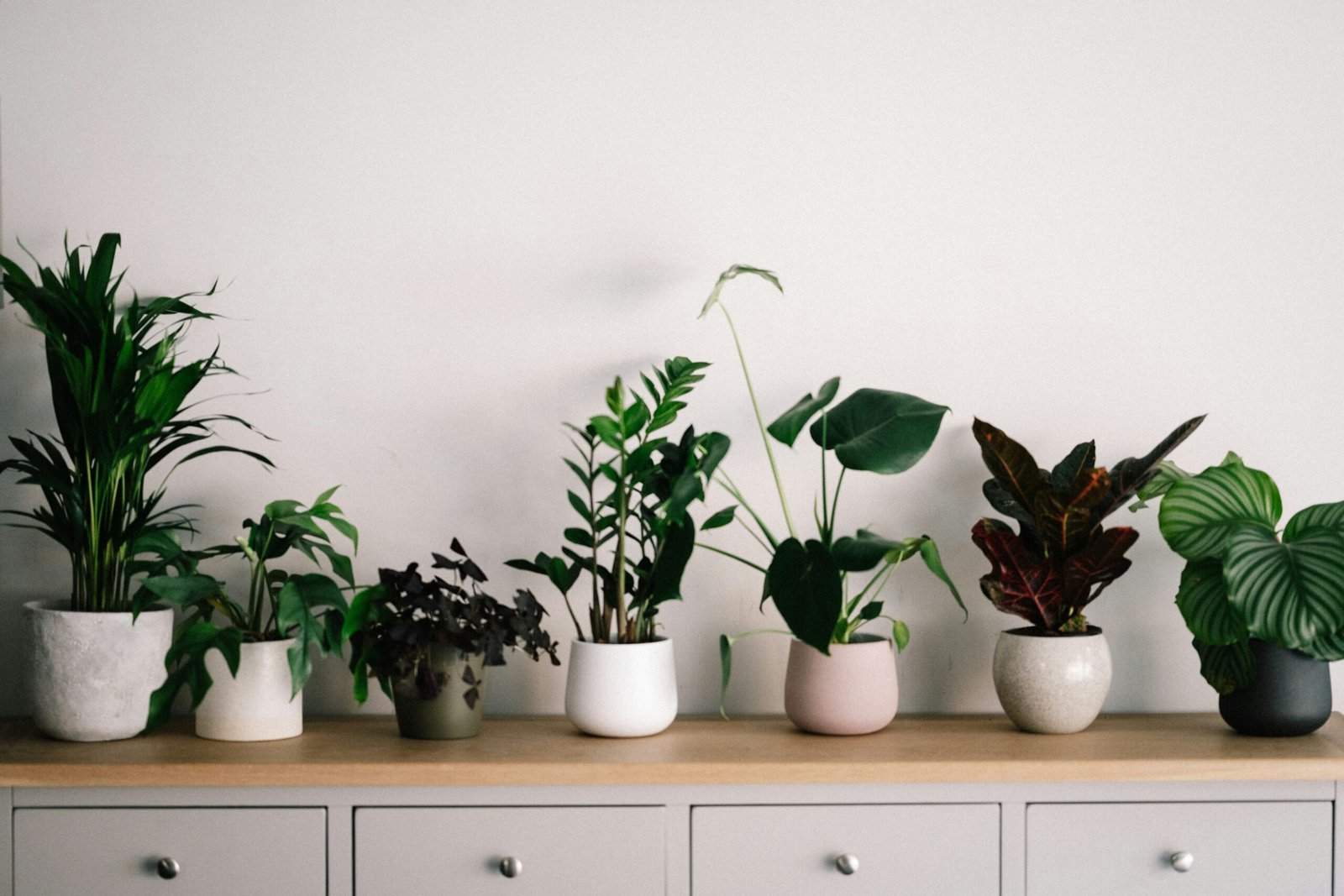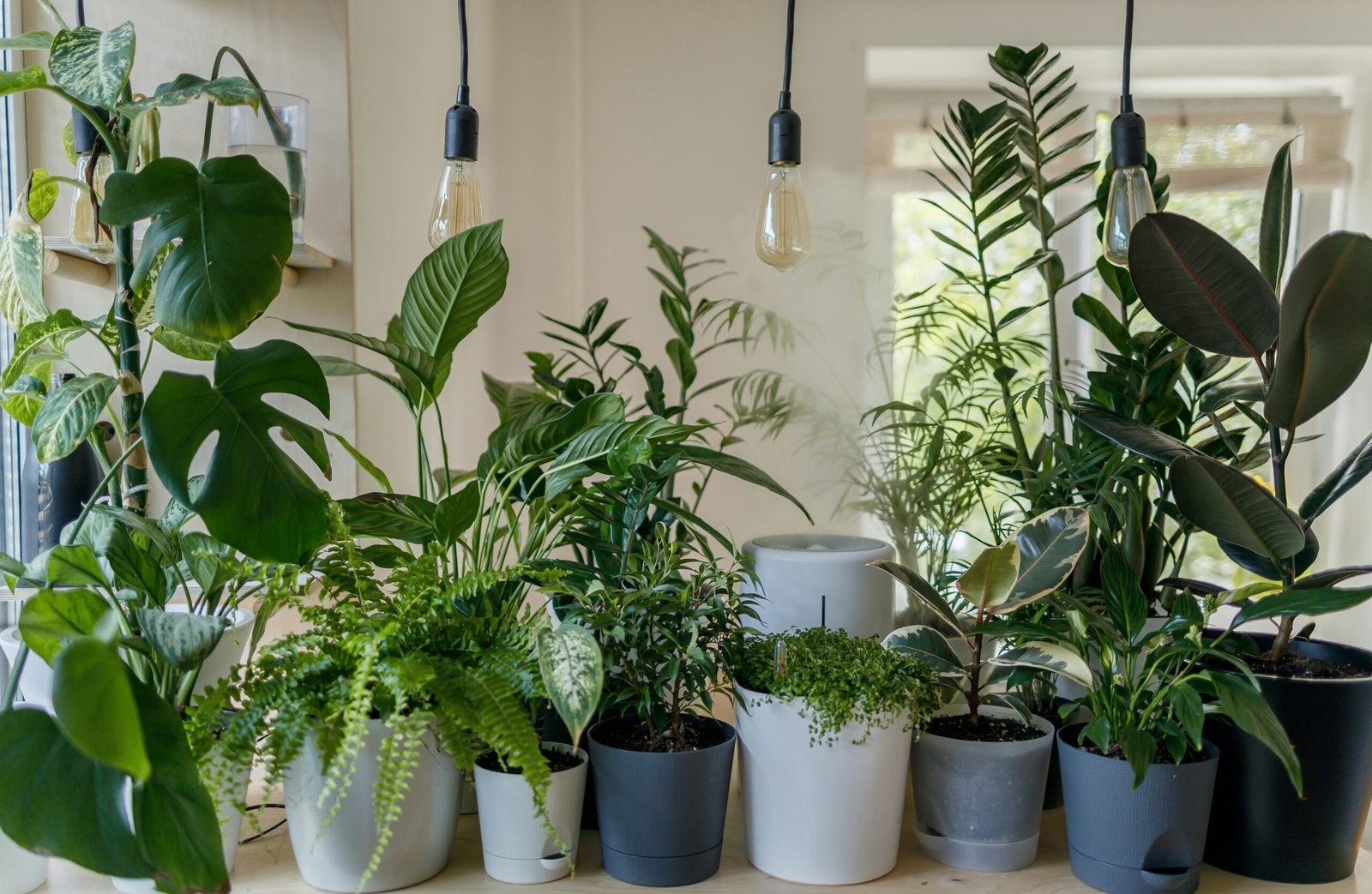Which Herbs Are Ideal for Kitchen Growing? Five Veggie-Rich Plants for a Quickly Edible Indoor Garden
Do you want to add some fresh, homegrown herbs to your cooking? It’s very easy to grow herbs in your kitchen, and it’s a great way to always have delicious, fresh tastes on hand. With the help of this thorough guide, you will learn about the five herbs that thrive in the kitchen and quickly turn your area into a delicious indoor garden.
Why Grow Herbs Indoors?
Indoor herb gardening has several benefits:
1. Freshness: Compared to dried or store-bought herbs, freshly selected herbs have a stronger taste.
2. Convenience: Cooking is more efficient and pleasurable when herbs are readily available.
3. Cost-Effective: Over time, cultivating your own herbs can save you money.
4.Year-Round Supply:** Since indoor herb gardens are not impacted by seasonal variations, fresh herbs are always available.
5.Decorative: Herbs provide your kitchen a splash of color and vitality while also improving its visual appeal.
1. Basil
Why Should It Be Grown?
A common ingredient in cooking, particularly in Italian and Mediterranean cuisine, is basil (Ocimum basilicum). Its fragrant leaves provide pesto, salads, and pasta a sudden taste of freshness. Home gardeners love basil for its sweet, peppery perfume and vivid green foliage.
Growing Advice:
Light: Sunlight is what Basil loves. It should be placed on a windowsill that gets at least six hours of sunshine each day. Use a grow light if there isn’t much natural light available.
Water: Make sure the soil is damp but not soggy. When the top inch of soil seems dry, water the basil. Take care not to moisten the leaves as this may encourage the growth of fungi.
Temperature: 70–85°F (21–29°C) is the best range for basil to grow in.
Soil: Use a potting mix that drains well. pH 6-7 slightly acidic soil is preferred for basil over neutral soil.
Harvesting: To promote bushy growth and avoid blooming, which may turn the leaves bitter, pinch off leaves often. To encourage new development, always pick from the top of the plant.
Recipes including basil:
1. Classic Pesto: To make a delectable pesto sauce, blend fresh basil leaves with garlic, pine nuts, Parmesan cheese, and olive oil.
2. Caprese Salad: Arrange tomato and mozzarella slices among fresh basil leaves, then drizzle with balsamic vinegar and olive oil.
3. Lemonade with basil: For a cool twist, add fresh basil leaves to lemonade.
2. Thyme
Why Should It Be Grown?
Strong and flavorful, thyme (Thymus vulgaris) is ideal for flavoring meats, soups, and roasted vegetables. This resilient plant needs little maintenance and grows well indoors. Additionally, thyme possesses antifungal and antibacterial qualities.
Growing Tips:
Light: Thyme need six hours a day in direct sunshine. The perfect window faces south.
Water: Let the soil become a little bit dry in between applications. Rotten roots might result from overwatering. Thyme grows well in dry climates.
Temperature: Thyme grows best in 60–75°F (16–24°C) ranges.
Soil: Choose a well-draining, sandy soil mixture. Thyme likes the soil to be somewhat alkaline (pH 7-8).
Harvesting: Cut stems short as necessary. Frequent pruning promotes new growth. Leaves of thyme may be dried and utilized later.
Recipes with Thyme:
1. Roasted Chicken: Before roasting, season a whole chicken with garlic, fresh thyme, and lemon.
2. Thyme-Infused Olive Oil: To make a fragrant cooking oil, steep fresh thyme sprigs in olive oil.
3. Carrots Glazed with Honey and Thyme: For a savory and sweet side dish, toss roasted carrots with a blend of honey and fresh thyme.
3. Chives
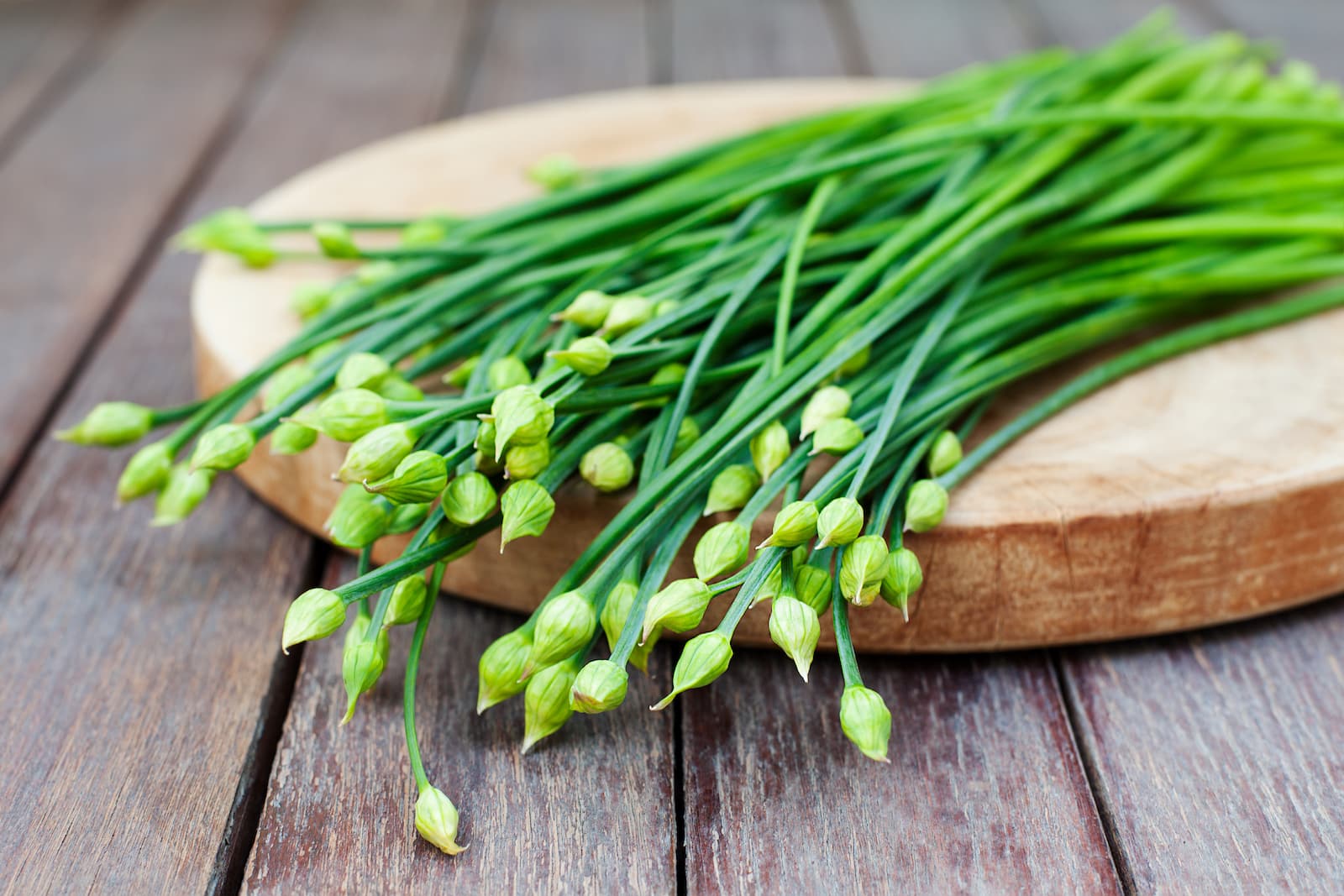
Why Should It Be Grown?
Allium schoenoprasum, or chopped onions, provide a subtle onion taste to salads, soups, and omelets. In your indoor garden, their beautiful green stems are as lovely to look at. Growing chives is simple, and they may be collected regularly.
Tips for Growing:
Light: Chives need four to six hours of sunshine a day. Although they can thrive in some shade, strong light is ideal for them.
Water: Make sure the soil is continuously damp but not soggy. Dry weather is not conducive to chives.
Temperature: 60–75°F (16–24°C) is the ideal range for chives.
Soil: Make sure the potting mix drains properly. Soil with a pH of 6-7 is preferred by chives since it is somewhat acidic.
Harvesting: To encourage ongoing development, trim the outer leaves at the base. To encourage healthy regeneration, avoid pruning more than one-third of the plant at a time.
Red-Sauce Recipes:
1. Chive Butter: For a delectable spread, combine melted butter with finely chopped fresh chives.
2. Potato Salad: To add a hint of onion flavor to potato salad, cut some chives.
3. Cheese and Cheddar Omelet: Toss in some fresh chives and your preferred cheese to make an omelet.
4. Parsley
Why Should It Be Grown?
The adaptable herb parsley (Petroselinum crispum) may be used in many different recipes as a garnish and taste enhancer. It grows well indoors and is high in vitamins A, C, and K. Curly parsley and flat-leaf parsley, often called Italian parsley, are the two principal varieties.
Tips for Growing:
Light: Parsley need around six hours of sunshine every day. While it can grow in little shade, it prefers full light.
Water: Maintain a damp but well-drained soil. When the top inch of soil seems dry, water it.
Temperature: 60–70°F (16–21°C) is the ideal range for parsley growth.
Soil: Use a potting mix that is rich and drains well. Parsley loves soil that is slightly acidic (pH 6-7) over neutral.
Collecting: Trim the outer leaves off the plant at the base so that the inner leaves may continue to develop. Bushy growth is encouraged by regular harvesting.
Parsley recipes:
1. Tabbouleh: To make a cool salad, mix fresh parsley with bulgur, tomatoes, cucumbers, and lemon dressing.
2. Chimichurri Sauce: To make a tasty sauce, blend fresh parsley, garlic, vinegar, olive oil, and red pepper flakes together.
3. Pesto with Parsley: For an interesting variation on a classic pesto recipe, try using parsley instead of basil.
Overall Advice for Indoor Herb Growing
1. Use the Right Containers: To avoid water buildup at the bottom, which may cause root rot, use pots with drainage holes. Self-watering pots are a good option if you want to guarantee steady moisture levels.
2. High-Grade Planting Soil: Make use of premium potting soil intended for herbs or vegetables. This guarantees the nutrition your plants need to flourish. Garden soil might be overly thick and may contain bugs, so stay away from it.
3. Carefully Fertilize: In general, herbs don’t need to be heavily fertilized. Apply a monthly dose of a water-soluble, balanced fertilizer. If you fertilize too much, your leaves may develop too quickly and lose taste.
4. Rotate Plants: To guarantee uniform light distribution and stop plants from developing unevenly, rotate your herb pots from time to time. If there is just one direction of light coming from your source, this is very crucial.
5. Beware of Insects: Look out for typical indoor pests such as spider mites and aphids. Use insecticidal soap or natural therapies to treat infestations as soon as possible. Examine the soil’s surface and the undersides of leaves on a regular basis.
6. Regular Pruning:
Herbs that are regularly trimmed grow more robustly and avoid becoming lanky. To maintain the health of the plant, remove any dead or yellowing leaves.
7. Air circulation and humidity: It might be dry indoors, particularly during the winter. To improve the humidity around your plants, spray them often or use
5. CILANTRO
Why Should It Be Grown?
Grown for its flavorful leaves and seeds, cilantro (Coriandrum sativum) is utilized in many different types of cuisine. It adds a distinct, vibrant taste to curries, salads, soups, and salsas. In addition to being high in antioxidants and vitamins A, C, and K, cilantro is a nutrient-dense complement to food. Cultivating cilantro in one’s own backyard guarantees a constant supply of fresh, pesticide-free cilantro. Furthermore, cilantro is a popular option for both rookie and seasoned gardeners looking to add flair to their culinary creations since it is reasonably simple to cultivate, both inside and out.
Tips for Growing:
Light: Cilantro requires four to six hours a day in direct sunshine. Put pots next to a window that faces south, or use grow lights that are placed 2-4 inches above the plants and left on for 12–14 hours per day.
Container and Soil: Select a container with adequate drainage that is at least 8 to 10 inches deep. Use a potting mix that drains well and is rich in organic materials. pH 6.2–6.8% soil that is slightly acidic is preferred for cilantro.
Temperature and Humidity: The ideal temperature range for cilantro is 60–70°F (15–21°C). Plants should not be placed next to drafty windows or sources of heat. Use a humidity tray or sometimes spritz plants for a healthy dose of moderate humidity.
Recipes including Cilantro:
- Cilantro Lime Rice: Cook rice and mix with fresh lime juice, chopped cilantro, and a pinch of salt. Perfect as a side dish for Mexican meals.
- Cilantro Pesto: Blend cilantro, garlic, pine nuts, Parmesan, and olive oil for a vibrant pesto. Great on pasta or as a dip.
- Cilantro Lime Chicken: Marinate chicken breasts in lime juice, cilantro, garlic, and cumin, then grill until cooked. Serve with a side of veggies.
- Cilantro Salsa: Combine tomatoes, onions, jalapeños, cilantro, lime juice, and salt. Serve with tortilla chips or as a topping for tacos.
- Cilantro Yogurt Dip: Mix Greek yogurt, chopped cilantro, lime juice, and a pinch of cumin. Serve with veggies or pita bread for a refreshing snack.

